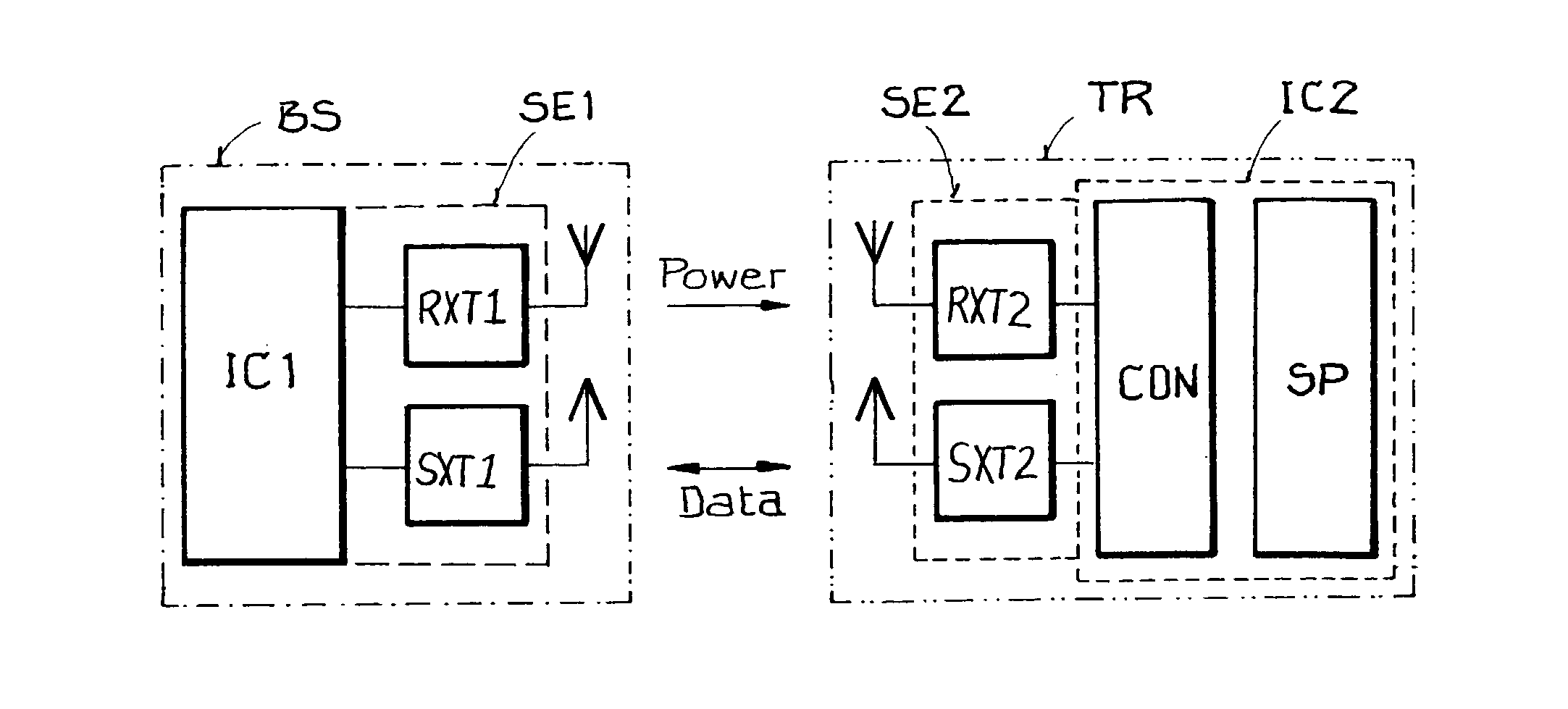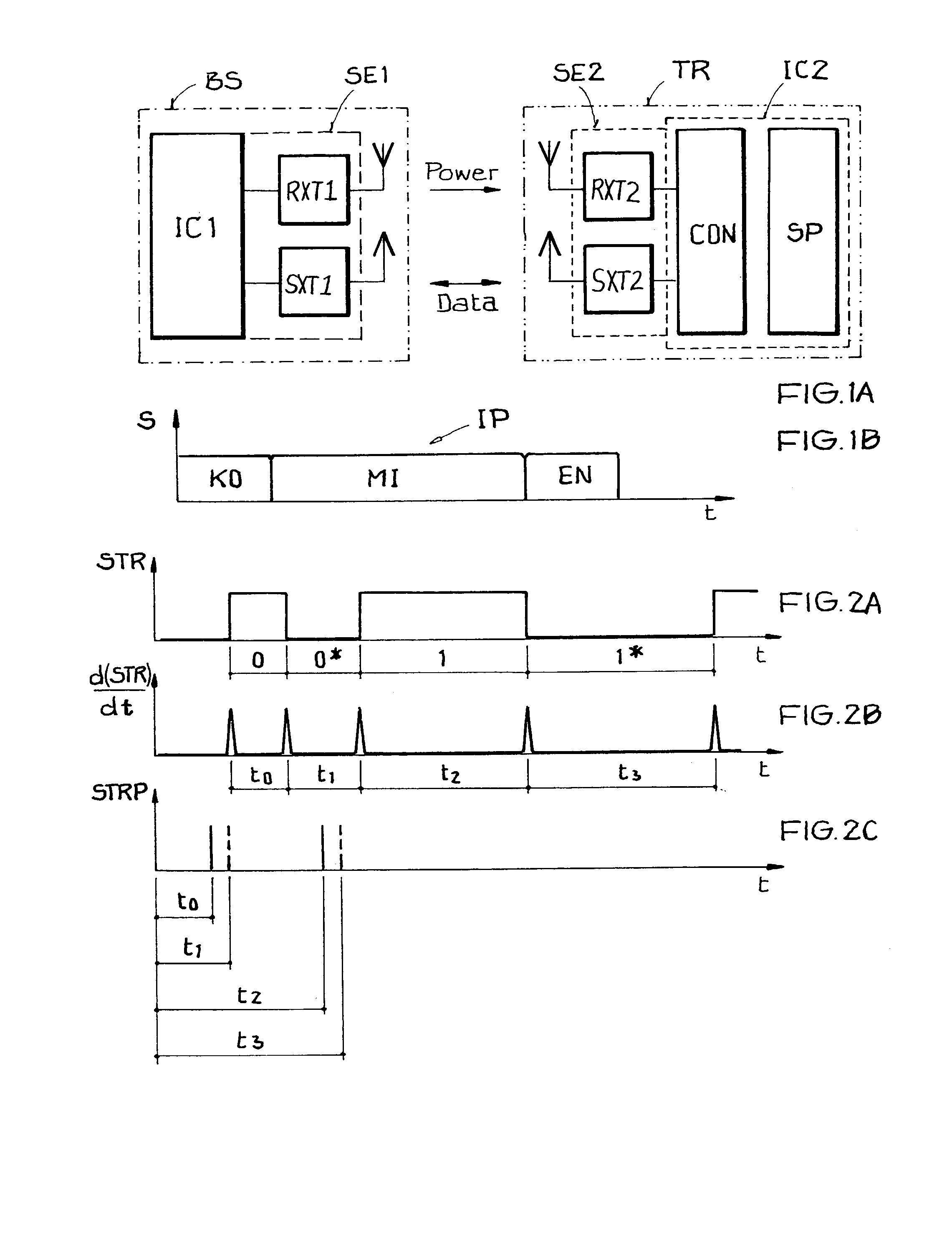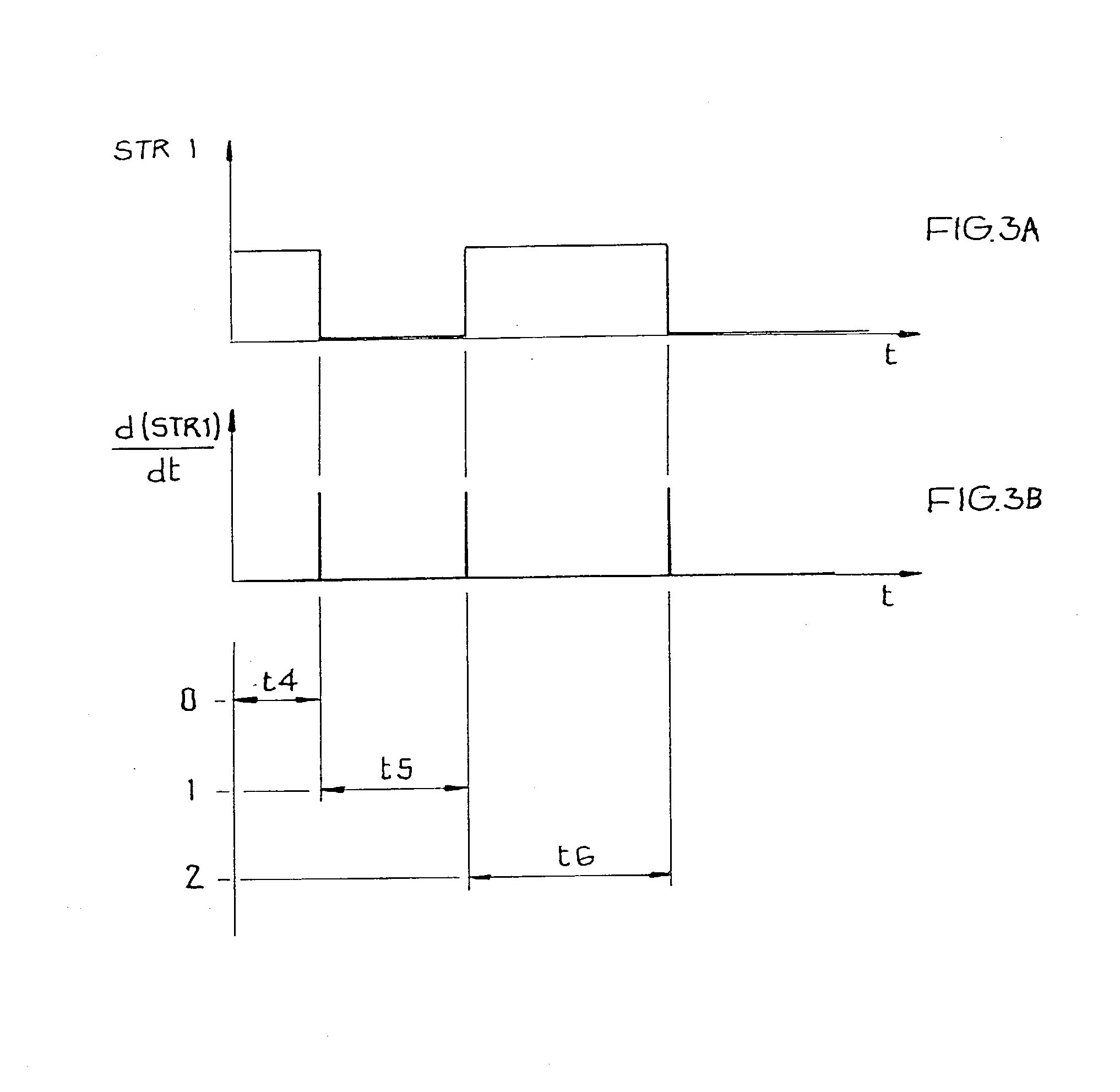Method of transmitting data with optimized transmission rate using packet header that defines data encoding parameters
a data transmission rate and data encoding technology, applied in multiplex communication, wireless commuication services, instruments, etc., can solve the problems of limiting the reach or range of communication, modulation intervals that reduce the data transmission rate, and constant low data transmission rates
- Summary
- Abstract
- Description
- Claims
- Application Information
AI Technical Summary
Benefits of technology
Problems solved by technology
Method used
Image
Examples
Embodiment Construction
[0033] FIG. 1A shows an arrangement for transmitting data according to the inventive method between a base station BS and a passive transponder TR. The data transmission may be a two-way communication, namely either the base station BS or the transponder TR may operate as the transmitter or the receiver at any given time. The passive transponder TR extracts the energy needed to operate its circuitry from the carrier wave transmitted by the base station BS. Such systems, among other applications, are used in motor vehicle systems, for example with the transponder TR installed in a door key and the base station BS installed in the automobile itself, whereby the data transmission relates to information for locking or unlocking, or opening or closing the door, or operating other accessaries of the automobile.
[0034] The base station BS comprises an integrated circuit IC1, which controls a transmit and receive unit SE1 including a receiver part RXT1 and a transmitter part SXT1. The transp...
PUM
 Login to View More
Login to View More Abstract
Description
Claims
Application Information
 Login to View More
Login to View More - R&D
- Intellectual Property
- Life Sciences
- Materials
- Tech Scout
- Unparalleled Data Quality
- Higher Quality Content
- 60% Fewer Hallucinations
Browse by: Latest US Patents, China's latest patents, Technical Efficacy Thesaurus, Application Domain, Technology Topic, Popular Technical Reports.
© 2025 PatSnap. All rights reserved.Legal|Privacy policy|Modern Slavery Act Transparency Statement|Sitemap|About US| Contact US: help@patsnap.com



